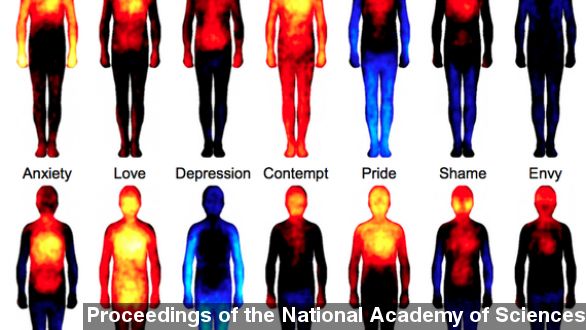We’ve all likely felt one of these before — a broken heart, cold feet, maybe a little hot under the collar — but a new set of human body maps shows those physical descriptions for feelings might be more than metaphors.
The maps were created by Finnish researchers — who, in a series of studies, looked at more than 700 people from Finland, Sweden, and Taiwan. (Via PolicyMic)
What they found was the all-over glow of happiness, the heart-hurt of sadness, and the sheer numbness of depression were felt in roughly the same way and in the same parts of the body by the participants. (Via Proceedings of the National Academy of Sciences)
“The warm yellows and reds on this map, if you will, depict increased activity, while the blues show a decrease.” (Via KDVR)
To evoke the emotions the subjects were shown emotional words, images, stories, and videos.
When they started to feel something they were asked to paint two human silhouettes for each emotion on a computer — one showing increased sensation in the body, the other decreased sensation. (Via Proceedings of the National Academy of Sciences)
The two silhouettes were then combined for each emotion and averaged across the entire study group.
“Not everybody painted each emotion in the same way, but the team averaged the maps together and this is what they came up with.” (Via KUSI)
Now interestingly, these maps were all subjective, meaning the participants' responses weren't measured directly.
As The Atlantic reports, “It's worth noting that the bodily sensations weren't blood flow, heat, or anything else that could be measured objectively—they were based solely on physical twinges subjects said they experienced.”
Those behind the study say the maps are imperfect and more research should be done, but think they could be used in the diagnosis and treatment of emotional disorders someday.
Which would likely give researchers that glowy-chest "pride" feeling. (Via Proceedings of the National Academy of Sciences)


